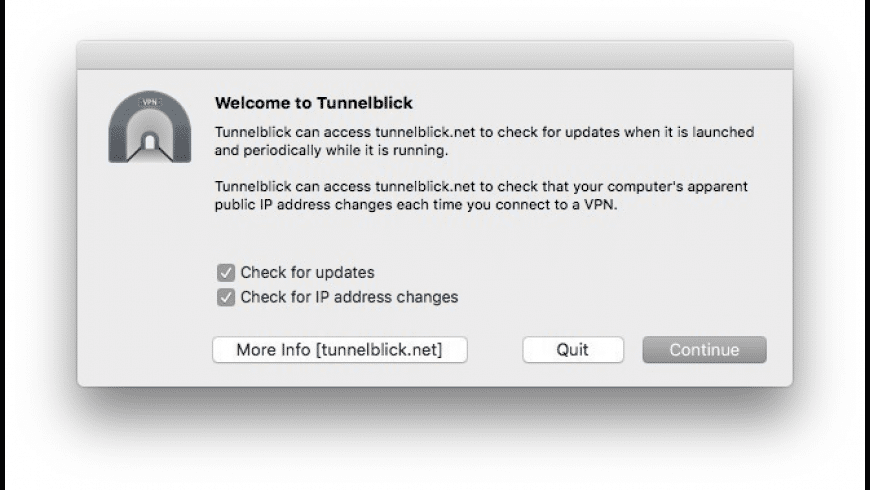Tunnelblick For Mac
Highlighted Articles Discussion Group | Tips for VPN Service ProvidersOn This Page Automatic Installation of Configurations when Tunnelblick is InstalledTunnelblick can install Tunnelblick VPN configurations at the same time that Tunnelblick itself is installed, using the same computer administrator authorization. For details, see Automatically Install Configurations and Forced Preferences. Automatic Installation of Forced Preferences when Tunnelblick is InstalledTunnelblick can install 'forced' preferences (settings that cannot be modified by a standard user) at the same time that Tunnelblick itself is installed, using the same computer administrator authorization. For details, see Automatically Install Configurations and Forced Preferences. Non-administrator Installations and Updates of VPN ConfigurationsFor security reasons, by default Tunnelblick requires a computer administrator's authorization to install or update VPN configurations. However, configurations or changes which are not security sensitive may be installed by a standard user (without authorization by a computer administrator) if a computer administrator has previously un-checked the 'Require computer administrator authorization to install all configurations' checkbox on the 'Preferences' panel of Tunnelblick's 'VPN Details' window. For details, see Standard Users Installing or Replacing Configurations. Nested Configurations and Configurations in FoldersTunnelblick can include one level of configurations within a configuration, and configurations can be contained in folders and subfolders to any depth. For details, see Nested Configurations. For example,the following single Tunnelblick VPN Configuration sets up six configurations contained in three folders: 'EnclosingConfiguration.tblk' is used as a container for the folder structure that contains the actual VPN configurations. When combined with the 'old' method of updating configurations (see below), this allows a single update to contain updates for all configurations. Tunnelblick and Usernames, Passwords, and PassphrasesOpenVPN setups often use the Tunnelblick stores the username, password, and/or passphrase for each configuration in the user's login Keychain as an 'application' password. Each is saved as a separate Keychain item named 'Tunnelblick-Auth-XYZ' where 'XYZ' is the name of the configuration. The username is saved in account 'username', the password is saved in account 'password', and the passphrase is saved in account 'privateKey'. Preferences Related to Usernames, Passwords, and PassphrasesThere are three per-configuration boolean preferences associated with usernames, passwords, and passphrases:
Each should be prefixed by the name of the configuration to which it applies, e.g. 'XYZ-keychainHasUsername'. Note that:
Named Credentials SetsTunnelblick allows configurations to share credentials (usernames, passwords, and passphrases). The user can enter the credentials once for one configuration and save them in the Keychain. After that, other configurations with which the credentials are shared will automatically obtain them from the Keychain as needed without requesting them from the user. Credentials are shared on Tunnelblick's 'Advanced' settings page. A simple checkbox allows all configurations to share the same credentials, or multiple sets of credentials can be created by giving them names, and then selected configurations set to use credentials with those names. Automatic Updating of VPN ConfigurationsTunnelblick has two separate methods for updating configurations:
Automatic Updating of TunnelblickTunnelblick includes a built-in updater, which checks for updates to the program and offers to update it when an update is available. Updating may be enabled or disabled on the 'Preferences' panel of Tunnelblick's 'VPN Details' window. For security reasons, Tunnelblick must always be installed and updated by a computer administrator. |


Tunnelblick Openvpn For Mac
See full list on tunnelblick.net. Tunnelblick is a user-friendly and unobtrusive macOS application that enables you to take control over the OpenVPN client and server connections from within a simple and clean interface. Complete package to connect to a VPN server from your Mac. To use Tunnelblick you need access to a VPN server: your computer is one end of the tunnel and the VPN server is the other end. For more information, see Getting VPN Service. Tunnelblick is licensed under the GNU General Public License, version 2 and may be distributed.